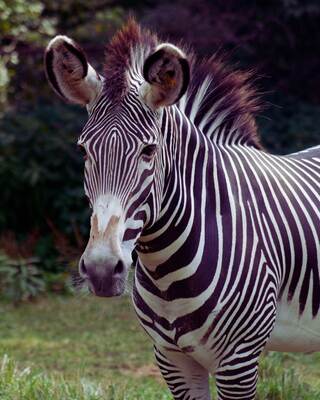
Grevy’s Zebras
Grevy's zebras are the largest species of zebra, known for their striking thin pinstripe pattern, tall stature, and donkey-like ears. Native to the arid grasslands of Kenya and Ethiopia, these zebras are quite different from their relatives. Unlike other zebra species, Grevy’s zebras are more solitary, with males defending territories that only females and young, non-breeding males can cross.
Adapted to the dry, harsh environments they call home, Grevy's zebras have specialized kidneys that allow them to survive for up to five days without water during droughts. Their diet consists of dry grasses and some leaves, perfect for the challenging conditions they face.
Sadly, Grevy’s zebras are now endangered, with fewer than 2,500 individuals remaining in the wild. This is due to hunting, habitat loss, and competition with livestock for water. The invasive mesquite plant has also reduced the grass vegetation that the zebras depend on for food. We are proud to be part of the Grevy’s Zebra Species Survival Plan, a collaborative effort to help protect and sustain the population of this incredible species.
Meet Samburu!
At the zoo, we care for a single Grevy’s zebra named Huru. As an older zebra, Huru is thriving with attentive care, often seen munching on a special diet of pelleted horse feed and hay.
To keep life enriching and engaging, Huru enjoys a variety of activities—from rubbing against brushes and rolling in sand to playing with boomer balls. His favorite treats? High-fiber leaf-eater biscuits, which we use during training to encourage healthy behaviors and build trust. Come visit Huru and see how we help him live his best life every day.